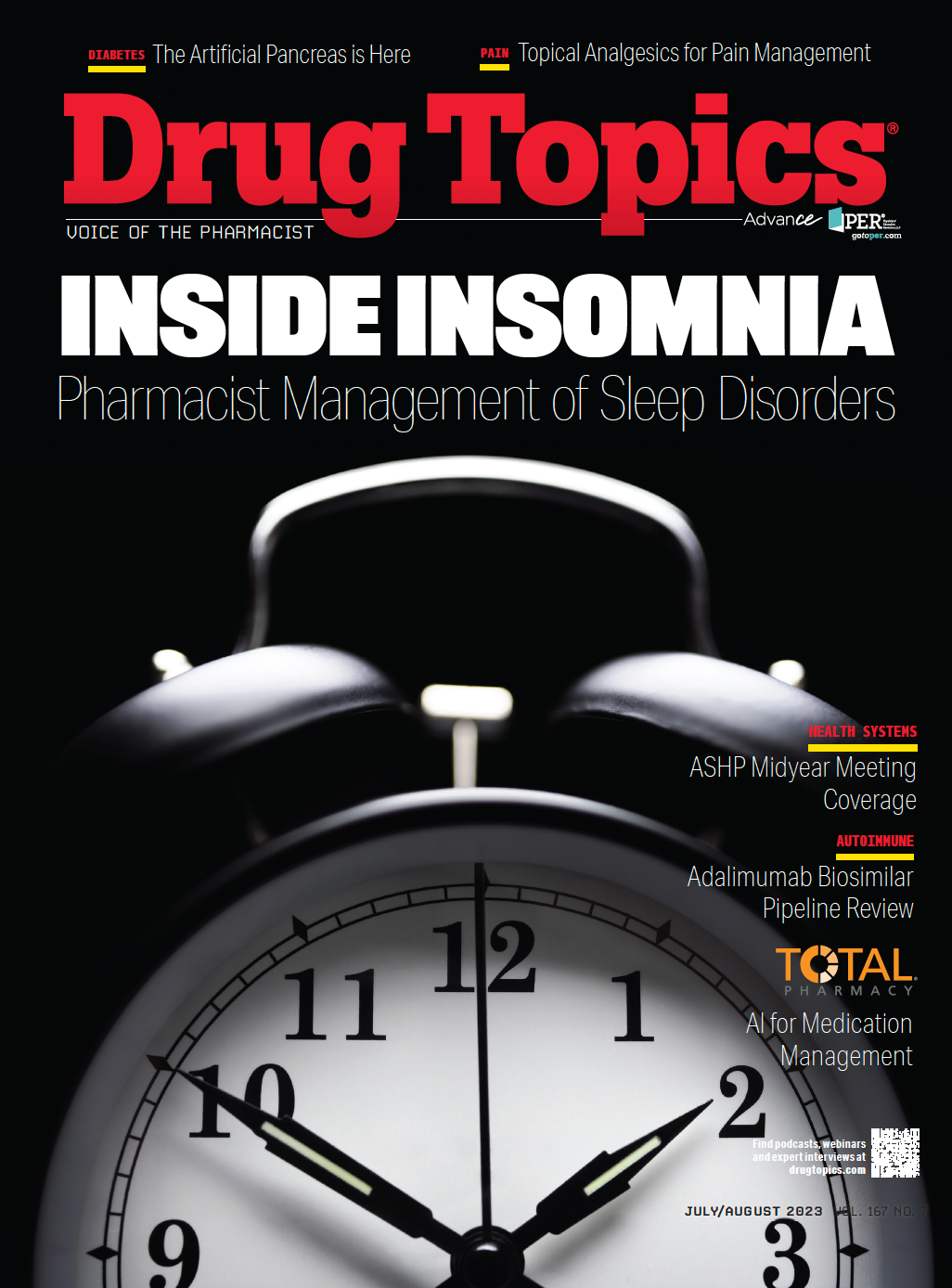FDA Approves Sotagliflozin for Treatment of Heart Failure
On May 26, 2023, the FDA approved sotagliflozin (Inpefa), a once-daily tablet indicated to reduce the risk of cardiovascular death, hospitalization for heart failure, and urgent heart failure visits in adults with heart failure or type 2 diabetes (T2D), chronic kidney disease, and other cardiovascular risk factors.1
Sotagliflozin is a first-in-class medication that is a dual inhibitor of sodium-glucose cotransporters 1 and 2. Although the mechanism of action leading to sotagliflozin’s benefits in heart failure has not been fully established, physiologic advantages of reduced renal glucose and sodium reabsorption include both preload and afterload reduction and downregulation of sympathetic activity.1
Efficacy
Results from 2 studies led to the US approval of sotagliflozin.2,3 The phase 3 SOLOIST-WHF trial (NCT03521934) was a randomized, double-blind, placebo-controlled, parallel-group, multicenter study comparing sotagliflozin (n = 608) and placebo (n = 614) in patients with T2D who had been admitted to the hospital, a heart failure unit, infusion center, or emergency department for worsening heart failure.2
Patients in the treatment group demonstrated a significant reduction (33%) in the composite end point of total occurrence of cardiovascular death, hospitalizations for heart failure, and urgent heart failure visits vs placebo (HR, 0.67; 95% CI, 0.53-0.85; P = .001). Within the components of the composite end point, only hospitalization for heart failure showed a significant hazard reduction (HR, 0.65; 95% CI, 0.49-0.87). Of note, there were relatively more events per 100 patient-years for hospitalizations for heart failure than for the other 2 components of the composite end point.2
The phase 3 SCORED trial (NCT03315143) was a randomized, double-blind, placebo-controlled, parallel-group, multicenter study examining the effects of sotagliflozin (n = 5292) on the composite total occurrence of cardiovascular death, hospitalizations for heart failure, and urgent heart failure visits versus placebo (n = 5292) in patients with T2D, chronic kidney disease, and additional cardiovascular risk factors.3
Sotagliflozin was superior to placebo in reducing the risk of the primary composite end point (HR, 0.75; 95% CI, 0.63-0.88; P < .001). Of the components in the composite primary end point, only the risk of hospitalization for heart failure was significantly reduced (HR, 0.66, 95% CI, 0.53-0.82). Cardiovascular death (HR, 0.90, 95% CI, 0.73-1.12) and urgent heart failure visits (HR, 0.73, 95% CI, 0.48-1.11) did not show a significant reduction.3
Safety
In the SOLIST-WHF trial, the most common adverse events in the sotagliflozin and placebo groups were hypotension (6% vs 4.6%, respectively), urinary tract infection (4.8% vs 5.1%, respectively), and diarrhea (6.1% vs 3.4%, respectively). Other adverse events that occurred at less than 5% included acute kidney injury, severe hypoglycemia, bone fractures, diabetic ketoacidosis, genital mycotic infections, and adverse events leading to amputation.2
In the SCORED trial, the most common adverse events reported for sotagliflozin were urinary tract infection (11.5%), diarrhea (8.5%), and volume depletion (5.3%). Other adverse events that occurred at a rate of less than 5% included bone fractures, genital mycotic infections, severe hypoglycemia, malignant conditions, venous thrombotic events, adverse events leading to amputation, diabetic ketoacidosis, and pancreatitis.3
Patients were shown to have a transient increase in serum creatinine and a decrease in estimated glomerular filtration rate within 4 weeks of initiation, which then stabilized regardless of baseline kidney function.1 Sotagliflozin is primarily metabolized by the enzyme UGT1A9 and to a lesser extent CYP3A4.1
Drug Administration
Sotagliflozin is supplied as a 200-mg or 400-mg film-coated tablet to be taken once daily and not more than 1 hour before the first meal of the day.1 Initial dosing is 200 mg once daily after assessing the patient’s volume status, baseline renal function, and hemodynamic stability in decompensated heart failure. Up-titration to a maximum of 400 mg daily may occur after at least 2 weeks, as tolerated.1
References
1. Inpefa. Package insert. Lexicon Pharmaceuticals Inc; 2023. https://www. accessdata.fda.gov/drugsatfda_docs/label/2023/216203s000lbl.pdf
2. Bhatt DL, Szarek M, Steg PG, et al; SOLOIST-WHF Trial Investigators. Sotagliflozin in patients with diabetes and recent worsening heart failure. N Engl J Med. 2021;384(2):117-128. doi:10.1056/NEJMoa2030183
3. Bhatt DL, Szarek M, Pitt B, et al; SCORED Investigators. Sotagliflozin in patients with diabetes and chronic kidney disease. N Engl J Med. 2021;384(2):129-139. doi:10.1056/NEJMoa2030186
